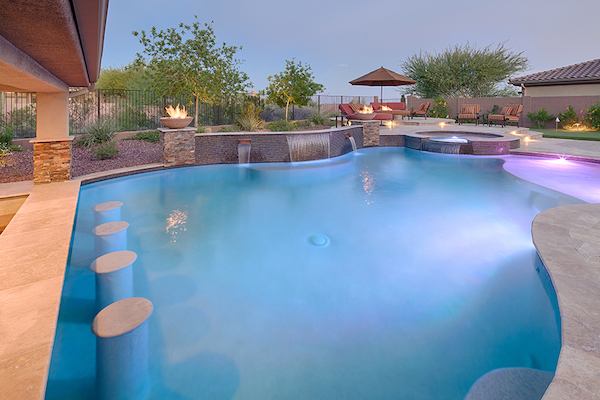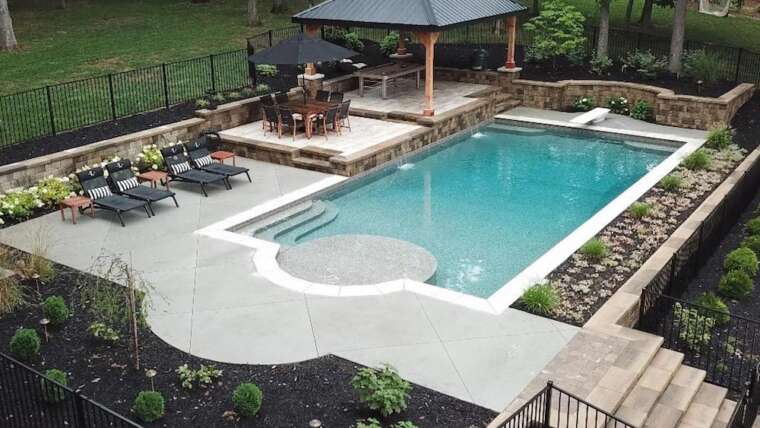Once installed, a fiberglass pool has the potential lifespan of more than 25 years. The key word here is potential. In order to get the most from your investment, you need to know how to best care for your fiberglass pool — and we’ve got tips to help you out.
Tip #1: Make Cleaning a Priority, Using the Right Products
While a skimmer system will take care of a lot of debris that collects in your fiberglass pool, you’ll still want to use a pool vacuum and net on a regular basis to account for the debris that the system doesn’t collect. Not only will your pool appear more inviting, but it will also be less susceptible to water imbalance caused by build-up.
Generally speaking, fiberglass pools are relatively resistant to stains but imbalances in the pool water’s chemistry can cause them from time to time. If this happens, make sure to apply gentle cleaners (rather than harsh, abrasive cleaners) with a soft bristle brush that won’t damage the pool’s gel-coat surface.
Tip #2: Maintain Proper Pool Water Levels
Pool water levels can fluctuate for a number of reasons, from a heavy rain that causes water levels to rise to humid summer conditions that cause evaporation and water levels to drop. While both scenarios pose risks to a fiberglass pool, the latter case is especially problematic as it can lead the skimmer to suck in dry air and burn out the pool’s motor.
Pool professionals generally agree the ideal pool water level height is at the skimmer’s midpoint. This degree of balance can avoid premature, costly repairs and preserve the quality of the fiberglass pool system as a whole.
Tip #3: Maintain the Proper Chemical Balance
One of the advantages of fiberglass pools is their durable, gel-coat surface is inert, and thus doesn’t have an impact on the pool water’s chemistry. While beneficial from a pool maintenance standpoint, other variables can still affect the pool’s chemical balance, such as the weather or lawn care and pesticide treatments that are applied alongside the pool.
With these factors in mind, fiberglass pool owners should regularly check their chlorine, pH and alkaline levels on a routine basis to ensure the pool stays chemically balanced. If you find that pH levels are low, for instance, you can add sodium carbonate (or soda ash) to raise them and prevent the corrosion of pool fixtures like ladders. Meanwhile, if your chlorine levels are too high, you can use a neutralizer to reduce chlorine levels in the water, minimizing irritation to swimmers and potential damage to pool equipment.
Proactive Maintenance Helps Your Fiberglass Pool Last Longer
Fiberglass pools require far less maintenance than vinyl liner pools and concrete pools. And while that’s one of their benefits, it’s not a sign to ignore maintenance. By taking the simple measures highlighted above, you can preserve your swimming pool for years to come and spend more time enjoying its use versus handling costly, frustrating repairs.
Have additional questions about how to care for a fiberglass pool? As a trusted installer of fiberglass pools across Northeast Ohio, Blue Impressions can provide you with helpful answers. Contact our team of professionals.




